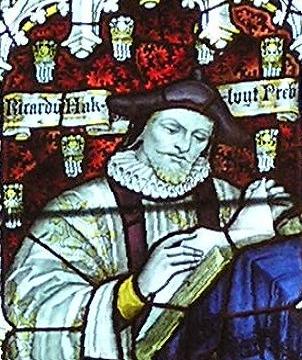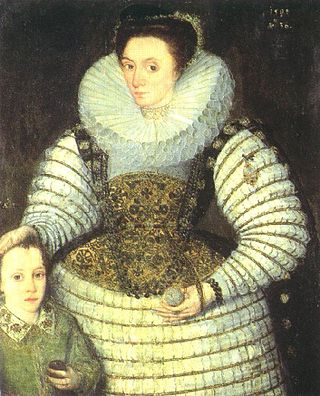Related Research Articles

Rhetoric is the art of persuasion, which along with grammar and logic, is one of the three ancient arts of discourse. Rhetoric aims to study the techniques writers or speakers utilize to inform, persuade, or motivate particular audiences in specific situations. Aristotle defines rhetoric as "the faculty of observing in any given case the available means of persuasion" and since mastery of the art was necessary for victory in a case at law, for passage of proposals in the assembly, or for fame as a speaker in civic ceremonies, he calls it "a combination of the science of logic and of the ethical branch of politics". Rhetoric typically provides heuristics for understanding, discovering, and developing arguments for particular situations, such as Aristotle's three persuasive audience appeals: logos, pathos, and ethos. The five canons of rhetoric or phases of developing a persuasive speech were first codified in classical Rome: invention, arrangement, style, memory, and delivery.
Singular they, along with its inflected or derivative forms, them, their, theirs and themselves, is a gender-neutral third-person pronoun. It typically occurs with an indeterminate antecedent, in sentences such as:

William Shakespeare was an English playwright, poet and actor. He is regarded as the greatest writer in the English language and the world's pre-eminent dramatist. He is often called England's national poet and the "Bard of Avon". His extant works, including collaborations, consist of some 39 plays, 154 sonnets, three long narrative poems, and a few other verses, some of uncertain authorship. His plays have been translated into every major living language and are performed more often than those of any other playwright. He remains arguably the most influential writer in the English language, and his works continue to be studied and reinterpreted.
The comma, is a punctuation mark that appears in several variants in different languages. It has the same shape as an apostrophe or single closing quotation mark in many typefaces, but it differs from them in being placed on the baseline of the text. Some typefaces render it as a small line, slightly curved or straight, but inclined from the vertical. Other fonts give it the appearance of a miniature filled-in figure 9 on the baseline.

Sir Philip Sidney was an English poet, courtier, scholar and soldier who is remembered as one of the most prominent figures of the Elizabethan age. His works include a sonnet sequence, Astrophel and Stella, a treatise, The Defence of Poesy and a pastoral romance, The Countess of Pembroke's Arcadia.
This article contains information about the literary events and publications of 1586.
George Silver was a gentleman of England during the late 16th and early 17th centuries, who is known for his writings on swordplay. He is thought to have been the eldest of four brothers, and eleventh in descent from Sir Bartholomew Silver, who was knighted by Edward II. He married a woman named Mary Haydon in London, in 1580. Silver's activities after the publication of his book are unclear. The fencing historian Aylward claims that he was alive in 1622, when he was visited by Cooke, Clarenceux King-of-Arms. However, Robert Cooke died in 1593. The Clarenceux King-of Arms in 1622 was William Camden, but as he became paralyzed in 1622 and died in 1623 it is doubtful whether he visited Silver either.

Richard Hakluyt was an English writer. He is known for promoting the English colonization of North America through his works, notably Divers Voyages Touching the Discoverie of America (1582) and The Principal Navigations, Voyages, Traffiques and Discoveries of the English Nation (1589–1600).

The alphabet for Modern English is a Latin-script alphabet consisting of 26 letters, each having an upper- and lower-case form. The word alphabet is a compound of the first two letters of the Greek alphabet, alpha and beta. The alphabet originated around the 7th century CE to write Old English from Latin script. Since then, letters have been added or removed to give the current letters:

Mary Herbert, Countess of Pembroke was among the first Englishwomen to gain notice for her poetry and her literary patronage. By the age of 39, she was listed with her brother Philip Sidney and with Edmund Spenser and William Shakespeare among the notable authors of the day in John Bodenham's verse miscellany Belvidere. Her play Antonius is widely seen as reviving interest in soliloquy based on classical models and as a likely source of Samuel Daniel's closet drama Cleopatra (1594) and of Shakespeare's Antony and Cleopatra (1607). She was also known for translating Petrarch's "Triumph of Death", for the poetry anthology Triumphs, and above all for a lyrical, metrical translation of the Psalms.

Frances Burke, Countess of Clanricarde, Dowager Countess of Essex was an English noblewoman. The daughter of Sir Francis Walsingham, Elizabeth I's Secretary of State, she became the wife of Sir Philip Sidney at age 16. Her second husband was Queen Elizabeth's favourite, Robert Devereaux Earl of Essex, with whom she had five children. Two years after his execution in 1601, she married Richard Burke, Earl of Clanricarde, and went to live with him in Ireland.
Sentence spacing concerns how spaces are inserted between sentences in typeset text and is a matter of typographical convention. Since the introduction of movable-type printing in Europe, various sentence spacing conventions have been used in languages with a Latin alphabet. These include a normal word space, a single enlarged space, and two full spaces.
In literature, writing style is the manner of expressing thought in language characteristic of an individual, period, school, or nation. As Bryan Ray notes, however, style is a broader concern, one that can describe "readers' relationships with, texts, the grammatical choices writers make, the importance of adhering to norms in certain contexts and deviating from them in others, the expression of social identity, and the emotional effects of particular devices on audiences." Thus, style is a term that may refer, at one and the same time, to singular aspects of an individual's writing habits or a particular document and to aspects that go well-beyond the individual writer. Beyond the essential elements of spelling, grammar, and punctuation, writing style is the choice of words, sentence structure, and paragraph structure, used to convey the meaning effectively. The former are referred to as rules, elements, essentials, mechanics, or handbook; the latter are referred to as style, or rhetoric. The rules are about what a writer does; style is about how the writer does it. While following the rules drawn from established English usage, a writer has great flexibility in how to express a concept. Some have suggested that the point of writing style is to:

MLA Handbook, formerly MLA Handbook for Writers of Research Papers (1977–2009), establishes a system for documenting sources in scholarly writing. It is published by the Modern Language Association, which is based in the United States. According to the organization, their MLA style "has been widely adopted for classroom instruction and used worldwide by scholars, journal publishers, and academic and commercial presses".
The 1583 Throckmorton Plot was one of a series of attempts by English Roman Catholics to depose Elizabeth I of England and replace her with Mary, Queen of Scots, then held under house arrest in England.The alleged objective was to facilitate a Spanish invasion of England, assassinate Elizabeth, and put Mary on the English throne.
Events from the year 1671 in England.
The history of English grammars begins late in the sixteenth century with the Pamphlet for Grammar by William Bullokar. In the early works, the structure and rules of English grammar were based on those of Latin. A more modern approach, incorporating phonology, was introduced in the nineteenth century.
Angel Day was an Elizabethan rhetorician and scholar chiefly known for his The English Secretary (1586), the first comprehensive epistolary manual to employ original English rather than classical models. The book belongs to the genre of instructional manuals, marketed for the growing business and middle classes of late 16th century England, and was extremely popular, going into as many as ten editions by 1635, and becoming the most influential correspondence manual of its time. Although his biography is poorly documented, entries on Day have appeared in the Dictionary of National Biography.
Capitalization or capitalisation in English grammar is the use of a capital letter at the head of a word. English usage varies from capitalization in other languages.
References
- ↑ Day, Angel (1586). The English Secretorie (1 ed.). London: Richard Jones.
- ↑ Day, Angel (1599). The English Secretary (4 ed.). London: C. Burbie.
- ↑ Brazil, Robert Sean (2013). Angel Day, The English Secretary, and the Seventeenth Earl of Oxford. Seattle: Cortical Output. ISBN 978-0985393816.
- ↑ Newbold, W. Webster (2008). "Traditional, Practical, Entertaining: Two Early English Letter Writing Manuals". Rhetorica: A Journal of the History of Rhetoric. 26 (3): 267–300: 270. JSTOR 10.1525/rh.2008.26.3.267.
- ↑ Barnes, Diana G. (2013). "Angel Day's Rhetoric for 'any learner' in The English Secretary". Epistolary Community in Print, 1580–1664. London: Ashgate Publishing. pp. 19–46: 19–20. ISBN 978-1409445357.